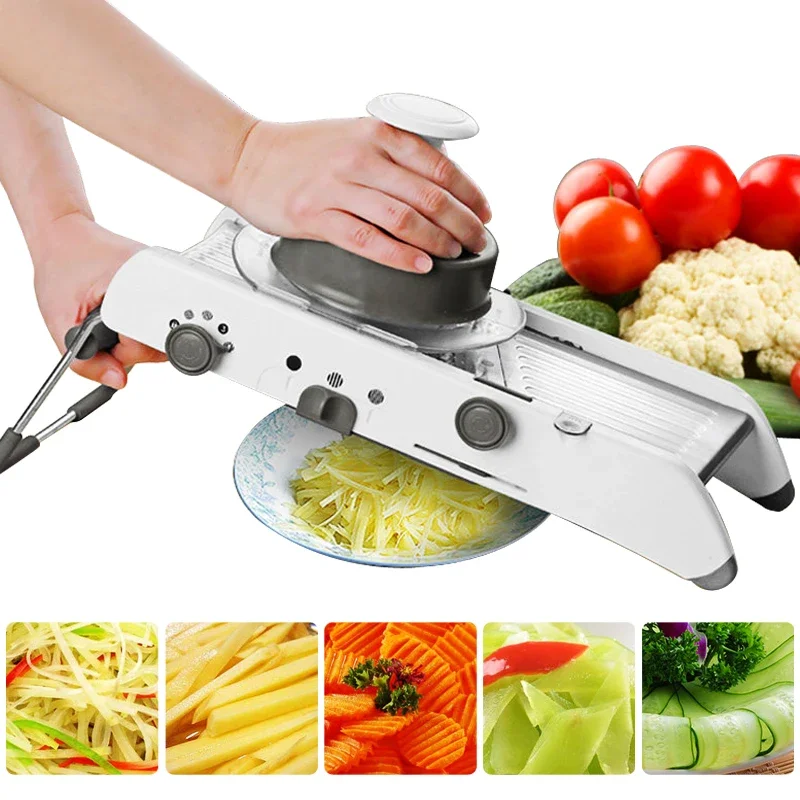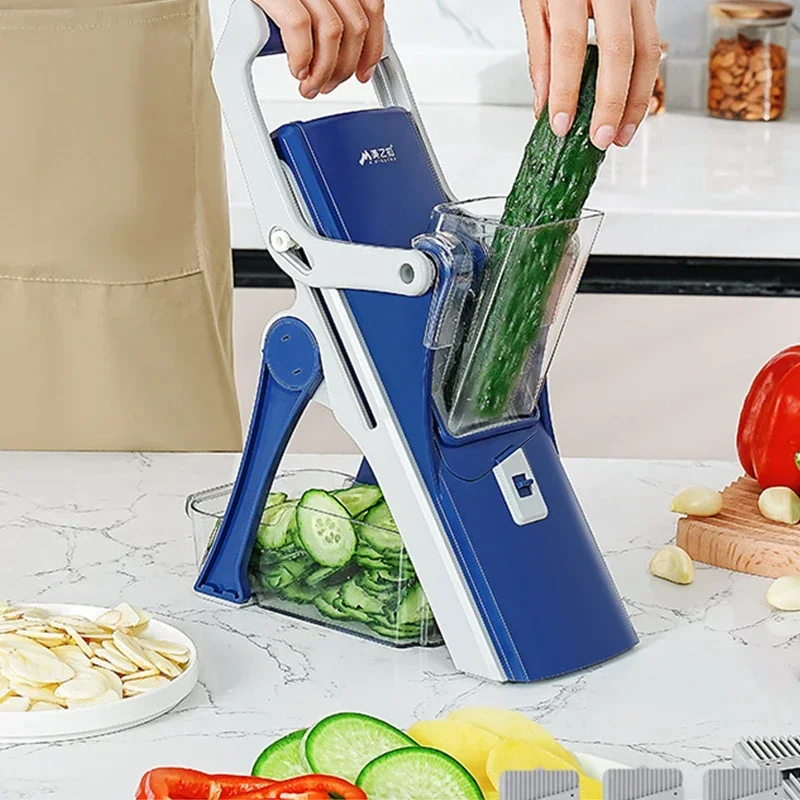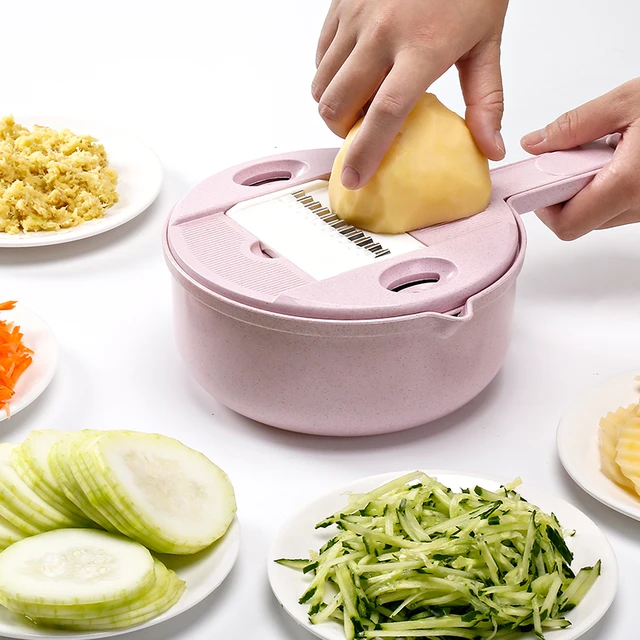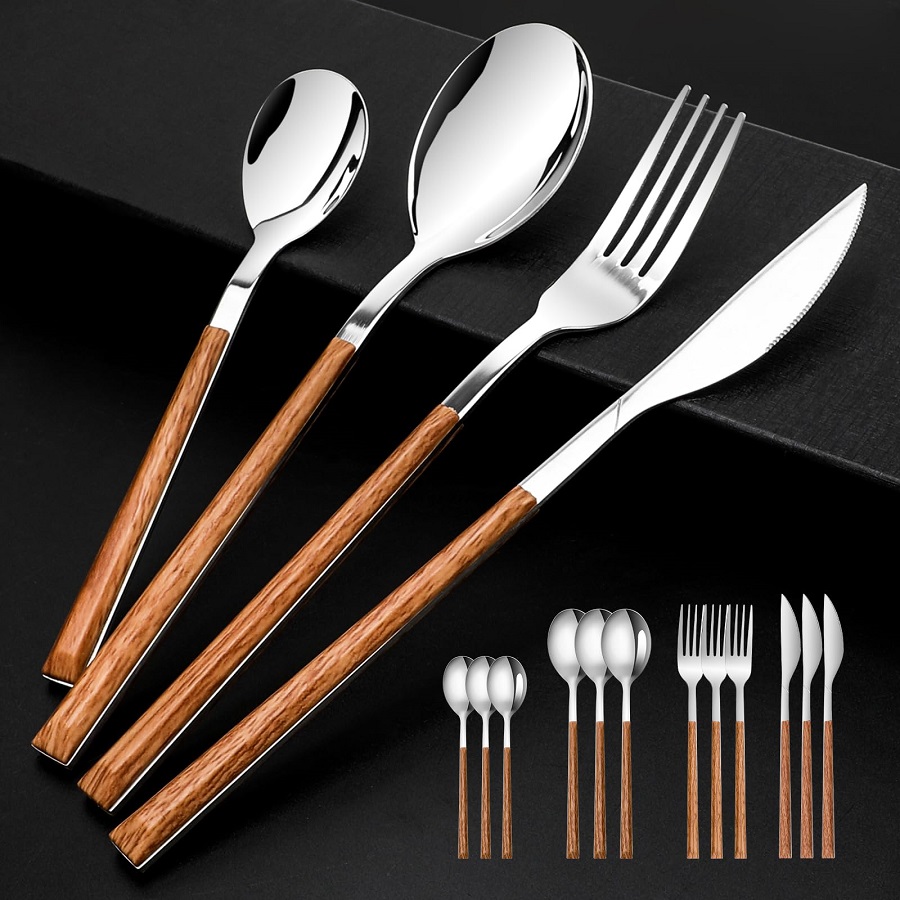 Introduction:
Introduction:
A vegetable slicer is a kitchen tool that simplifies the process of slicing and preparing vegetables. With its ability to improve efficiency and precision, the vegetable slicer has become a popular choice for home cooks and professional chefs. In this comprehensive guide, we will explore the functions, types, benefits, and maintenance of vegetable slicers. By understanding these aspects, you can make an informed decision when choosing and maintaining a vegetable slicer for your kitchen.
Functions of Vegetable Slicers
Effortless Slicing:
Vegetable slicers allow you to effortlessly slice vegetables into uniform shapes and sizes.
They save time and effort compared to traditional hand slicing methods.
Versatile Cutting Options:
Vegetable slicers offer various cutting options, such as thin or thick slices, julienne strips, or spiral cuts.
This versatility enables you to create a wide range of dishes and presentations.
Enhanced Precision:
Vegetable slicers ensure precise and consistent slicing, resulting in evenly cooked vegetables and attractive food presentations.
You can achieve professional-looking results even without advanced knife skills.
 Types of Vegetable Slicers
Types of Vegetable Slicers
Mandoline Slicers:
Mandoline slicers feature a flat surface with adjustable blades.
They allow you to create precise slices of different thicknesses effortlessly.
Spiralizers:
Spiralizers are specifically designed to create spiral-shaped cuts or “noodles” from vegetables like zucchini or carrots.
They offer a healthy alternative to traditional pasta.
Multifunctional Slicers:
Multifunctional vegetable slicers combine various slicing options, such as straight cuts and Julienne strips, into a single tool.
They are versatile and convenient for different food preparations.
Benefits of Vegetable Slicers
Time and Effort Savings:
Vegetable slicers streamline the slicing process, reducing both the time and effort required.
They are especially useful when preparing large quantities of vegetables or for repetitive slicing tasks.
Consistency and Presentation:
Vegetable slicers ensure consistent cuts, resulting in even cooking and attractive food presentations.
They help you achieve professional-looking results effortlessly.
Culinary Creativity:
With vegetable slicers, you can experiment with different slicing techniques and shapes, enhancing your culinary creativity.
You can create visually appealing dishes and explore new recipes using sliced vegetables.
Some common areas where people tend to place their vegetable slicers:
Vegetable slicers can be placed in various locations in the kitchen, depending on personal preference and convenience. Here are some common areas where people tend to place their vegetable slicers:
Kitchen Countertop:
Many people prefer keeping their vegetable slicers on the kitchen countertop for easy and immediate access. Placing it near the food preparation area ensures convenience while chopping or slicing vegetables.
Cabinet or Drawer:
If you have limited countertop space or prefer to keep the surface clear, storing the vegetable slicer in a cabinet or drawer can be a good option. Ensure that the cabinet or drawer is easily accessible and has sufficient space to accommodate the slicer.
Pantry or Shelving:
Some individuals choose to store their vegetable slicers on pantry shelves or open kitchen shelving. This allows for easy access while keeping the slicer organized and out of sight when not in use.
Kitchen Island:
If you have a kitchen island with ample workspace, placing the vegetable slicer on the island can create a dedicated area for slicing and chopping. This keeps the slicer within reach during food preparation and separates it from other cooking activities.
Consider your kitchen layout, available space, and frequency of use when deciding where to place your vegetable slicer. The goal is to choose a location that is easily accessible, secure, and suits your workflow in the kitchen.
 Maintenance and Care of Vegetable Slicers
Maintenance and Care of Vegetable Slicers
Regular Cleaning:
After each use, wash the vegetable slicer with warm soapy water and a soft brush.
Pay attention to the blades and crevices to remove any food residue.
Drying and Storage:
Thoroughly dry all parts of the slicer to prevent rust or bacterial growth.
Store the slicer in a dry and safe place to protect the blades from damage.
Blade Maintenance:
Check the sharpness of the blades and sharpen them if necessary.
Follow the manufacturer’s instructions for blade maintenance and replacement.
Safety Measures:
Always handle the slicer with care to avoid cuts or injuries.
Keep the slicer out of reach of children and use protective gloves when necessary.
 Several trends in recent years:
Several trends in recent years:
The vegetable slicer market has seen several trends in recent years that have contributed to their increasing popularity. Some notable trends include:
Health and Wellness:
With a growing focus on health and wellness, there is increasing demand for vegetable slicers as they encourage the consumption of fresh fruits and vegetables. Vegetable slicers make it easier to incorporate more plant-based options into meals, supporting healthier eating habits.
Rise of Plant-Based Diets:
The rise in popularity of plant-based diets, such as vegetarianism and veganism, has significantly contributed to the demand for vegetable slicers. These diets often rely on a variety of sliced or spiralized vegetables as substitutes for traditional pasta or as main dish ingredients.
Convenience and Time-Saving:
Today’s busy lifestyles drive the demand for kitchen tools that save time and simplify meal preparation. Vegetable slicers provide a quick and efficient way to slice, julienne, or spiralize vegetables, reducing the time and effort needed for food prep.
Culinary Creativity:
Vegetable slicers allow individuals to explore their creativity and experiment with different cuts and presentations. This trend is seen in the growing popularity of spiralizers, which offer unique ways to transform vegetables into aesthetically pleasing spiral shapes, suitable for a range of dishes.
Eco-Friendly Alternatives:
As more people become environmentally conscious, there is a greater emphasis on reducing single-use plastic and food waste. Vegetable slicers offer a solution by allowing individuals to slice their own vegetables instead of purchasing pre-cut or packaged alternatives.
Technological Advancements:
Advancements in technology have led to the development of high-quality vegetable slicers with improved features, such as adjustable blade settings, enhanced safety mechanisms, and easy-to-clean designs. These advancements attract consumers seeking reliable and efficient tools for their kitchen.
It is important to note that trends in the vegetable slicer market can vary depending on regional preferences, dietary habits, and lifestyle factors. However, overall, the increasing focus on health, convenience, creativity, and sustainability has contributed to the popularity and ongoing innovation in the vegetable slicer industry.
 Conclusion:
Conclusion:
A vegetable slicer is an essential tool for efficient and precise vegetable slicing. With its various functions, types, and benefits, a vegetable slicer can enhance your cooking experience and presentation skills. By ensuring regular maintenance and proper cleaning, you can extend the lifespan and performance of your vegetable slicer. With its time-saving and creative capabilities, the vegetable slicer is a valuable addition to any kitchen, enabling you to effortlessly slice vegetables and create visually stunning dishes.



